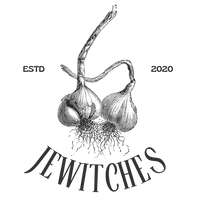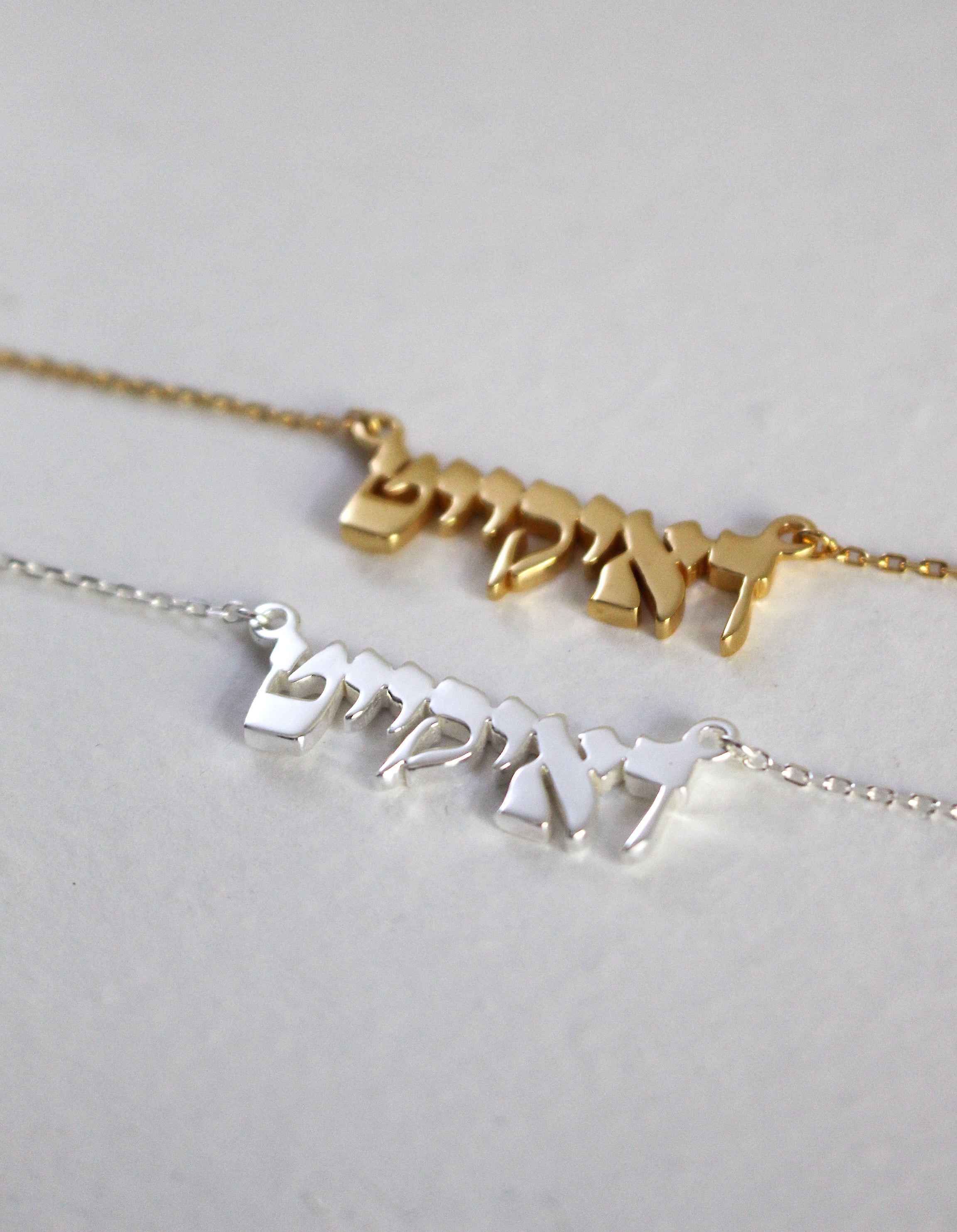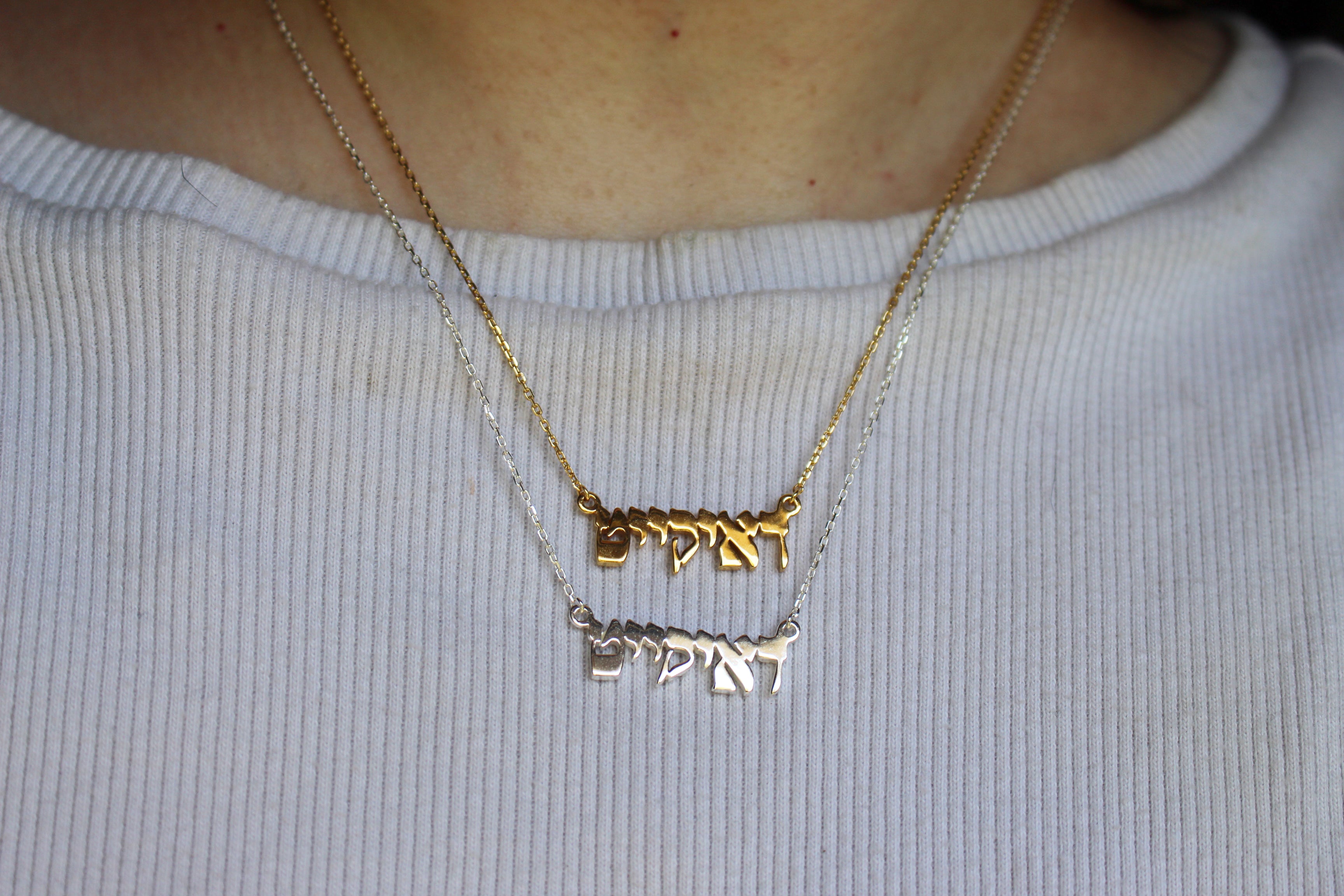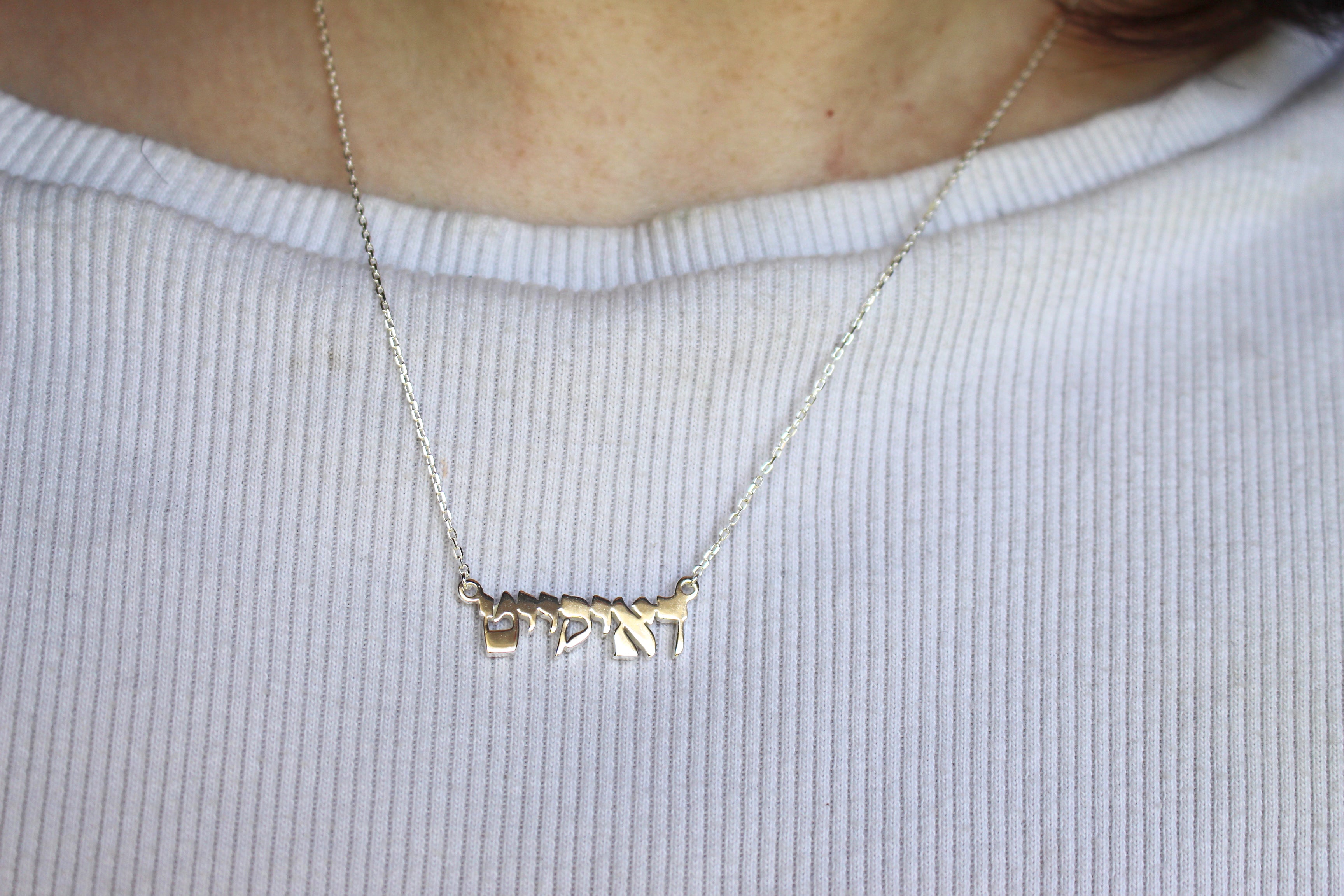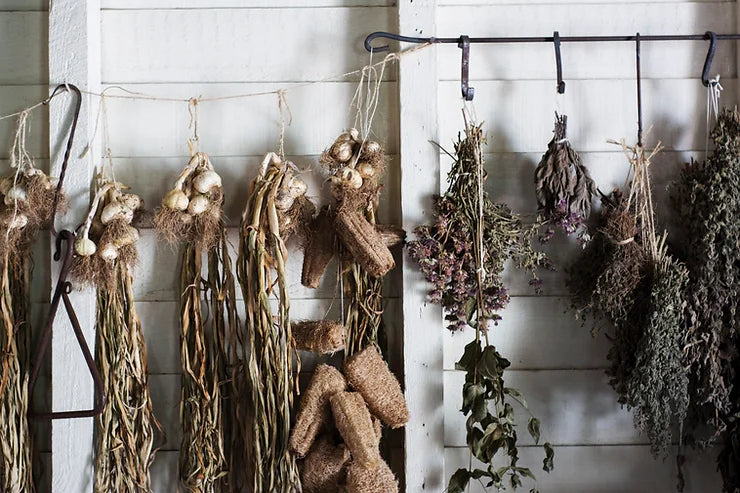Lavender for sleep. Rosemary for clarity. Rose for love. Those are the basics, according to the Internet. But there is so much more to herbalism, and the use of herbs, especially in the Jewish tradition.
The modern terminology of herbalism is defined by Wikipedia as "the study of pharmacognosy and the use of medicinal plants, which are a basis of traditional medicine." (1) But for this blog post, we're going to narrow the focus to three specific areas: ritual, magical, and medicinal plants historically and traditionally used by Jews.
Important Warning: Consult a qualified individual before ingesting any herbs, as their effects can vary and may interact with existing medical conditions or medications. This article is not a replacement for medical or professional advice.

It is important to note the Jewish Diaspora is vast, and as Jews moved and settled, different herbs were available to them. This means that the herbalism of one group would look different from the herbalism of another. This is meant to be an overview. There are many Jewish herbal traditions that I will not cover. This will also not be all-encompassing. The traditions of Jews and herbs are vast and diverse: far more intricate than any single blog post could adequately investigate in detail. This is meant to serve as a light overview and jumping-off point for further research in a few different directions on the topic of Jews and herbs.
Separating ritual, magical, and medicinal is a difficult task; these categories are blurred, overlapping, and interwoven, even before the introduction of herbs. As history continued, as new herbs were introduced, as Jews created and uncreated rituals and magic, plants were faithfully by our side, allies, and tools to whatever end.
The modern idea of spirituality and medicine being separate entities is just that: a modern conception. For most of history, illness, disease, and by extension, the healing of said maladies were all part of a spiritual ecosystem. Demons and evil entities were often believed to be the cause of illness, and to cure an illness wasn't merely stopping a series of physical symptoms; it was ridding the patient of whatever evil plagued them. Plants that were physically powerful could also serve as magically protective, in turn, deeming them ritually important, meaning that a single plant could fall within all three categories at once.
The use of plants in ritual spans to before the Exodus from Egypt. When the Israelites were to paint blood over their door posts to protect them from the angel of death claiming the firstborns, it was the plant hyssop that they were instructed to use. Its protective uses are lauded to this day.
"Take a bunch of hyssop, dip it in the blood that is in the basin, and apply some of the blood that is in the basin to the lintel and to the two doorposts. None of you shall go outside the door of your house until morning." Exodus 12:22
When offerings are burnt for HaShem, hyssop and cedar are required, "the priest shall order two live pure birds, cedar wood, crimson stuff, and hyssop to be brought for the one to be purified." Leviticus 14:4
The purification rituals include hyssop, once again, "Another party who is pure shall take hyssop, dip it in the water, and sprinkle on the tent and on all the vessels and people who were there, or on the one who touched the bones or the person who was killed or died naturally or the grave ."Numbers 19:18
Fragrant incense, ketoret, burned at the altar was created of 11 fragrant herbs, identified by Maimonides as, "Onycha, Storax, Frankincense, Musk, Cassia, Spikenard, Saffron, Costus, Cinnamon, Agarwood," with the addition of "salt of Sodom and Jordanian amber. Another two ingredients (vetch lye and "caper wine") were used in preparation of the tziporen (onycha) spice. There was also a special herb, referred to simply as maaleh ashan ("makes smoke rise"), that would produce a pillar of smoke that rose straight up rather than spread out. The identity of the herb was a secret that was closely guarded by members of the Avitnus family, who made the incense based on the tradition of their ancestor" (13).
The anointing oil of the Kohanim, high priests, is made of olive oil, myrrh, cinnamon, and other spices, as described in the Torah.
"And you, take for yourself spices of the finest sort: of pure myrrh five hundred [shekel weights]; of fragrant cinnamon half of it two hundred and fifty [shekel weights]; of fragrant cane two hundred and fifty [shekel weights]." (Shemot 30:23)
The use of plants in ritual has not waned or lessened in the Diaspora, though they are hardly identified by these names. Once pointed out, people can often point to numerous ritualistic uses of herbs. One such easily identifiable experience is Havdalah, the closing ceremony of Shabbat (the Sabbath). It is believed, in very few words, that during Shabbat, one receives extra spiritual heights. At Havdalah, this Shabbat soul departs and your soul is left devastated. To comfort and soothe oneself, one inhales the scent of fragrant spices, herbs, or fruits. (4) The most popular of the herbs used for this is cloves.
According to OUKosher, in regards to Ashkenazi tradition, "Mishnah Berurah (297:1) writes that for Havdalah, no matter which spice one smells, one recites the bracha of borei minei besamim. Ordinarily, each type of spice has a separate Bracha: Spices that grow from the ground are borei isvei besamim. Spices that grow on a tree are borei atzei besamim. Spices that are edible fruit are ha'nosein rei'ach tov b'peiros. Still, since many are not familiar with these brachos and to avoid confusion, it was instituted that at Havdalah one only recites borei minei besamim, which is the most general Bracha and will cover every spice. However, lechatchila it is best to use a spice whose bracha is borei minei besamim. According to many opinions the Bracha on cloves is borei minei besamim, and therefore it is a preferred spice. One may also mix other spices together with the cloves." (3)
However, they acknowledged that Sefardi communities might follow a different tradition that commands specific blessings as per the blend of spices. The example given is that for cinnamon, which comes from trees, the blessing of "borei atzei besamim" would be required.
Outside of cloves, cinnamon, cardamom, myrtle, myrrh, star anise, orange peel, etrog, mint, rose, and jasmine are popular, among others. These fragrant spice blends are often kept in highly decorated boxes; in Ashkenazi households, many of these besamim spice boxers take the appearance of castles or turrets. For some communities, it is a tradition to save the myrtle from Sukkot, our next ritualistic use of plants.
During Sukkot or the Feast of the Tabernacles, we utilize four sacred plants known as the Arba minim or "Four Kinds., "The lulav is a palm branch, which is joined with myrtle and willow branches, and an etrog, a citron fruit. The four species are held and waved during various parts of the synagogue service on Sukkot" (5). According to Chabad, "A palm branch (lulav), two willows (aravot), a minimum of three myrtles (hadassim) and one citron (etrog)" are the correct quantities for each (6). The bundle of palm, myrtle, and willow is often referred to as the "lulav" on its own, due to the prominence of the palm. During the various services, "the custom is to wave the arba minim in all six directions—south, north, east, up, down and west" (6).
The myrtle is frequently kept for including in the besamim for Havdalah, while the etrog may be turned into jam, liquor, or decorations, as well as a myriad of other uses. Customs vary by community on the methodology and purpose of disposal for the Arba minim.
While not explicitly used within the same rituals as the etrog and lulav, during Sukkot, it is traditional to eat the Seven Sacred Species.
"A land of wheat, and barley, and vines, and fig trees and pomegranates; a land of olive oil and honey (Deut. 8:8)."
Great Kabbalist, Rabbi Isaac Luria, gave associations to each of the special species: Wheat, barley, grapes, figs, pomegranates, olives, and dates. His work linked these plants to the seven of the lower sefirot or Divine Emanations. Wheat = Chesed, Barley = Gevura, Grapes = Tiferet, Figs = Neztach, Pomegranates = Hod, Olives = Yesod, Dates = Malchut.
These sacred plants appear heavily within Jewish ritual–with grape wine and juice, being a central component of Shabbat, Havdalah, and most major holidays, wheat and barley, being used for the creation of Challah and matzoh, pomegranate appearing on tables as the preferred fruit at holidays, celebration, as well as eaten ritually for its connection to fertility, and so on and so forth.
These few examples of ritual usages of plants are well known to most Jews, but there are other uses that have experienced marginalization in recent years, leaving certain members of the community without introduction to their purpose and benefit. Alternatively, their experiences with them have been greatly demystified, shrouded not in their spiritual power and propensity for protection or healing, but in that of mundanity.

Garlic, for example, is a powerful spiritual and medicinal protectant. Jews so heavily consumed garlic that we were dubbed "garlic eaters". Antisemitic images of us in Europe featured Jews holding bags of money and bulbs of garlic, as depicted in this image from Worms. In Spain, the use of garlic was a means of identifying one as Jewish during the Inquisition.
Just as heretics and Jews have always fled from Christian doctrines, so they have always fled from Christian customs," the priest wrote; "They...never lose the Jewish habit of eating garbage of onions and garlic fried in oil…" Andrew Bernaldez was chaplain to the Archbishop of Seville in Spain during the Inquisition (7).
But Jews across the Diaspora did not just consume garlic for its delicious flavor and health benefits–which have been extensively studied–but because it was known to be a wonderful protective substance.
Garlic bulbs were hung in doorways, planted near the entrance to homes, cloves tucked into pockets, added to bulsika (small protection satchels), placed beneath pillow cases, in doorways and windowsills, used to ward off evil and all those who might seek to harm someone. Garlic was also an aphrodisiac, heavily consumed on Shabbat, which was a prime time to engage in intimacy. In the modern day, however, someone might not know that the reason they grew up eating garlic so much, especially for Shabbat, was because their mother believed in its ritualistic and magical properties.
Rue, alternatively, was another highly sought-after and lauded herb for its magical and protective properties, as well as its flavor. Ruda, Ruta graveolens רודה, is one of the most commonly used and venerated plants among Jewish communities.
"As a woman from Bulgaria recalled, "When we were sick, my mother used to perform livianos of lead. Also she used to boil mint, a little rue, a little lemon. All mixed up. She would boil it like a tea, strain it, and give it to us to drink for stomach ache. There we didn't go too much to the doctor, as we do here. Things of the house, they did things to us at home. All the medicines were prepared for different pains. Everything helped" (8).
"Ruda, yes. When the eye hurt, this I remember from my Grandmother, they washed the ruda, they mashed it well, they put it with a little sugar in a thin rag, and it was placed on the eye. And it was good. It is good even today. (8).
Rue was also used as an abortifacient, as well as to ease menstrual symptoms. This is not medical advice. DO NOT ATTEMPT.
But rue's physically curative properties were not its most important one: protection.
Rue was planted outside the home and in courtyards. Sprigs were placed in the beds of laboring and newly delivered parents, in the cradles of infants, pinned to the curtains of the bed, and even to the new parents' hair. It is placed beneath pillows, behind the ear, and tucked into the clothing of an infant going for circumcision. It could also be layered with numerous other protective practices, symbols, and items–like garlic, blue beads, and more (8).
One may grow up drinking rue tea, tending to rue gardens, or even placing a sprig of rue on their own child's bed, not knowing why they partake in such a tradition or practice.
The use of herbs in ritual was extensive, and as Jews moved throughout the Diaspora, new herbs were acquired. For example, one popular methodology of Jewish ritual included writing upon the leaves of various plants: fig, myrtle, olive, and sage.
In a love magic ritual from late antiquity, a new bride and groom are instructed to write in honey upon a leaf of sage.
"To increase love between groom and bride. When the bride comes from the chuppah after the conclusion of the blessing, write the name of both of them with honey upon two leaves of sage and give to eat the leaf upon which is written the man('s name) to the man and the name of the woman to the woman" (9).
The variety would have most likely been common garden sage or another variety; however, it would not have been white sage or salvia apiana, which is indigenous to the west coast of the Americas and would not have been available to Jews.
For centuries, Jews were known as spice traders, herbalists, and healers, among other things. With some sources cite that "Jews played a significant role in the spice trade as early as the biblical times of Solomon (10th century B.C.E.)" (10). While Christian Europeans faced a complex relationship with spices, Jews maintained a consistent allyship with plants native to the Diaspora, as well as others.
London Jews of the 17th century had not given up the practice of trading. After the Inquisition, conversos (or crypto Jews, Jews forced to live as Jews pretending to be Christian due to forced Catholic conversion) would often pass themselves off as Portuguese as a means of hiding their Jewishness.
"Doge and Senate in August 1609: 'Many Portuguese merchants in this city have been discovered to be living secretly as Jews. Some have already left and others have had a little grace to allow them to wind up their business, in spite of the laws which are very severe on this subject." (2)
"There is, nonetheless, enough to encourage the belief that these two Portuguese were indeed crypto Jews, and Mr. Samuel, in the case of Pinto, cites the carrying of his body overseas for burial as seemingly strong evidence" (2)
"From 1621 there is no trace of known Jewish merchants in the Port Books until 1637, when we find the first mention of Carvajal exporting buckram to Corunna, woollens, ointment, and whetstones to Rouen, re:exporting Normandy canvas to St. Lucar and Malaga and gum arabic to Bilbao." (2)
Items from the list of imports and exports by Jews of London in the 17th century [only including items relevant to herbalism, medicine, or magic]. (2)
Almonds
Amber
Aniseed
Balsam
Bezoar stone = a concretion taken from the stomach of an animal and used as an anti? dote or counter-poison
Cardamom = a spice used as a stomachic
Cinnamon
Clover seeds
Cloves
Cochineal
Cortex = a medicinal bark
Great bugle?probably the herb
Green ginger
Ground ginger
Gum elenum = elemi Gum tragacanth
Incense
Jesuits' bark = cinchona
Licorice
Manna = a juice from certain species of ash; used as a purgative
Mustard seeds
Nutmegs Oil
Orange flower water
Saffleurs?safflowers, dried pet? als of which made a red dye
Salt
Spanish tobacco
Amber Apothecary ware
Beeswax
When not known for trading, Jews were well known for their place in the medicinal field. Both men and women alike were well versed in the power of medicine, with gentiles often seeking out Jewish doctors and physicians when ill. One of the most famous of physicians, Maimonides, or Moses ben Maimon, is one such doctor.
However, in an effort to protect Jews, there were often prohibitions against treating gentiles and having gentiles treat Jews in certain communities. It is important to note that these prohibitions existed due to the bigotry and violence against Jews. "It is interesting to note that the rabbis' suspicious attitude toward non-Jewish physicians was not based on their potential incompetence or lack of access to effective therapies, but rather on their personal animosity towards Jews. Moreover, medical interactions have the potential to help other religions throve or convert Jews to other faiths" (11). Were it not for the violence and forced conversions that Jews faced, perhaps there would be more sharing of knowledge between communities.
Jewish medical texts were also highly popular, with segulot ve-refu'ot, remedy books, serving a particular purpose. Deatra Cohen and Adam Siegel, authors of Ashkenazi Herbalism, make note to include that while many of said manuscripts were attributed, many were not, like that of Sefer ha-Toladot, which is a manuscript on midwifery, which indicates it may have been written by a woman (12).

"Women have always been healers. They were the unlicensed doctors and anatomists of Western history. They were abortionists, nurses, and counselors. They were pharmacists, cultivating healing herbs and exchanging secrets of their uses. They were midwives, travelling from home to home and village to village. For centuries women were doctors without degrees, barred from books and lectures, learning from each other, and passing on experience from neighbor to neighbor and mother to daughter. They were called "wise women" by the people, witches or charlatans by the authorities." (14)
Women are, however, mentioned in Talmudic texts as purveyors of medicinal knowledge. "Women play a central role in the rabbinic therapies, as they did in ancient medicine more broadly". (12). One woman who is quoted frequently is the foster mother of Abaye, who is called upon to share many of her remedies, cures, and medicines. It is mentioned that the Baal Shem Tov was the son of a midwife, and while her knowledge is often spurned, contemporary sources have begun to investigate how her knowledge may have been foundational in his education. However, women were not always respected in their respective communities, nor did men necessarily concern themselves with the illnesses that women devoted their lives to preventing.
"The women did it. It was the business of the women. No, it was not the hahamim [rabbis, learned men]. They didn't occupy themselves with such things." (9).
"These women knew about everything. They used to do it for the evil eye, they did it for the nazar [casting the evil eye], for espanto, for many other things. And they were always respected, and they in turn did such things….They were called mujeres santas [saintly women], mujeres bendichas [blessed women], and almas dil Dio [souls from G-d, saintly people]..." (9).
There were numerous roles and titles for various healers. Ashkenazi Herbalism teaches us that in Eastern European communities, "Feldshers were considered "folk physicians" by their communities, and Ashkenazi Jews affectionately referred to their community feldshers as rofe, or royfe, Hebrew for doctor". Much like physicians, they also relied heavily on segulot ve-refu'ot.
In 1911, Preuss Press in Germany published Biblisch-talmudische Medizin, or Biblical-Talmudic Medicine. This compendium of Talmudic and Biblical cures, remedies, and medicines covers everything from erectile dysfunction to the common cold.
Classically used Jewish Plants
While we have already discussed cloves, garlic, and rue, there are many herbs that have appeared in Jewish communities. Here are just a few found within Jewish texts.
Almond
Anise
Asparagus
Barley
Bay Laurel
Beets
Belladonna
Bitter Vetch
Black Cumin
Black pepper
Black seed
Blueberries
Calamus
Cardamom
Chervil
Chicory
Cinnamon
Cloves
Comfrey
Cucumbers
Cumin
Dates
Devil's Snare
Elderberry
Etrog
European White Waterlily
Frankincense
Garlic
Gentian
Ginger
Grapes
Hay
Houndstongue
Hyssop
Leeks
Lentils
Lettuce
Mallow
Mandrake
Marjoram
Milt
Mint
Mustard
Myrrh
Myrtle
Nettles
Nutmeg
Olive
Olive Leaf
Olive oil
Onion
Pomegranate
Parsley
Purslane
Radishes
Raspberries
Raspberry Leaf
Red Clover
Rosemary
Rue
Saffron
Sage
Spearmint
Spinach
St. John's Wort
Strawberry
Tobacco
Uva Ursi
Valerian
Vervain
Wheat
Wormwood
This is by no means a complete list but rather an example of the wide variety of the plants used by Jews throughout the Diaspora.
Jewish Herbalists & Resources
Accessing medicines and learning from herbalists who come from a Jewish background is entirely possible. There are numerous resources, with only a few being offered here.
Herbaria, hosted and taught by Jewish clinical herbalist, Sarah, of Rowan + Sage, is an online herbalism platform of classes, materia medica, discussion boards, and more. B'Samim Apothecary is a Jewish-run apothecary that offers consultations, medicines, and more.
Books like Ashkenazi Herbalism by Deatra Cohen and Adam Siegel, Medicine in the Talmud: Natural and Supernatural Therapies Between Magic and Science by Jason Sion Mokhtarian, Ritual Medical Lore of Sephardi Woman: Sweetening the Spirits, Healing the Sick by Rosemary Lévy Zumwalt and Isaac Jack Lévy are ones that I have personally found helpful and extremely useful.
The use of herbs as part of ritual, medicine, and magic has always existed within Judaism. Learning about Jewish herbalism is a vital part of reconnecting and reclaiming much of the Jewish magical practice that has been hidden beneath a shroud of secularism, mundanity, and propriety.

-
WOOLF, MAURICE. "Foreign Trade of London Jews in the Seventeenth Century." Transactions & Miscellanies (Jewish Historical Society of England), vol. 24, 1970, pp. 38–58. JSTOR, http://www.jstor.org/stable/29778801. Accessed 14 Jun. 2022.
-
https://oukosher.org/halacha-yomis/many-people-specifically-use-cloves-besamim-spices/
-
https://www.chabad.org/library/article_cdo/aid/609564/jewish/The-Lulav-and-Etrog-The-Four-Kinds.htm
-
https://aish.com/garlic-and-jews-6-little-known-jewish-facts/
-
Ritual Medical Lore of Sephardi Woman: Sweetening the Spirits, Healing the Sick
-
Jewish Love Magic. Ortal-Paz Saar, Magical and Religious Literature of Late Antiquity 6
-
Medicine in the Talmud: Natural and Supernatural Therapies Between Magic and Science, Jason Sion Mokhtarian
-
Ashkenazi Herbalism: Rediscovering the HErbal Traditions of Eastern European Jews
-
https://www.chabad.org/library/article_cdo/aid/4423106/jewish/Why-Ketoret-Incense-in-the-Temple.htm
-
Witches, Midwives & Nurses: A History of Women Healers. Barbara Ehrenrecih & Deirdre English
